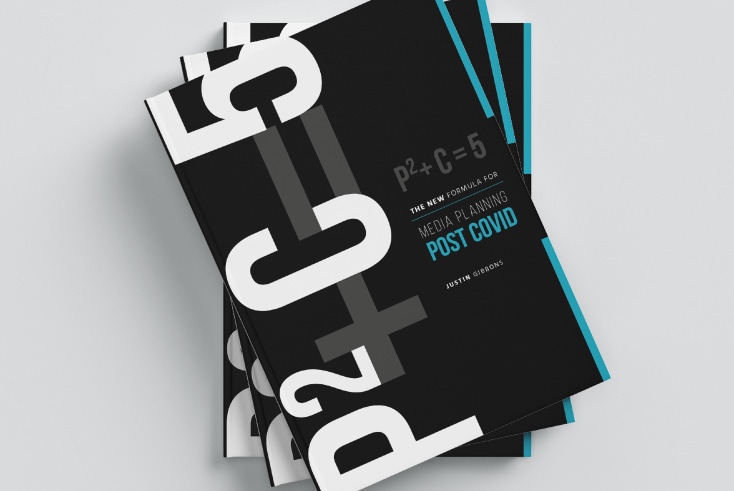P²+C=5: Solutions for media planning post-Covid

Following the launch of his new book, researcher and author Justin Gibbons explains why now is the perfect time to think about media in a different way
It all started with a book I was writing about the Brand Gap – the gap that exists between what media planners know to be best practice, referenced by Binet and Field and Byron Sharp, and what actually happens in the cut and thrust of media departments.
There was a pronounced imbalance between brand support and short-term activation that was leading, for the first time, to a decline in the brand equity of the top UK brands, according to BrandZ.
And then Covid and lockdown happened and the work I’d been doing with clients and agencies was brought into even greater focus. Rather than re-emphasising that there was a problem, I started to look at all the evidence for a new solution for a new point in time.
So I’ve written a new book, P²+C=5, which at its heart is a new framing, away from brand and response, to something that is more tangible.
The Ps are short for public media and private media. Public media, such as TV and out-of-home (OOH), are consumed mostly in public and convey trust, familiarity and fame. There’s an old saying that you can’t tell lies in public, and there’s something different about being consumed in the public space rather than the private space.
But more importantly, public media act as priming or signalling for private media, and make your work in mobile, social and online work harder. It’s more noticeable, more trusted and more likely to be clicked on. That’s why the two working together is P², as the public media amplifies private media.
The second part of the equation is C, for creative. As broadcast channels such as out-of-home digitise, creative is now portable between your digital online assets and the newly digitised broadcast media. It makes the channels of public and private media easier to plan together using the same distinctive creative assets.
Indeed, Facebook say the ideal creative is 6 seconds, with a 3 second audition, brand in shot throughout, and to delight with sound off. Other people may call that a digital poster. Never has it been easier to transfer digital assets between media.
And if you can get P²+C working, I have found you can get five enhanced outcomes.
The first is trust and brand familiarity. The brand is in the repertoire and is more likely to be on the shortlist. It has mental availability and is more likely to stand out from the crowd of online ads that you receive every day.
The second is attention – a new metric for a new age. Mike Follett of Lumen Research has helped form the Attention Council of advertisers and agencies. Getting attention in a world of short-form communication is difficult, but with increased attention comes increased awareness, increased click throughs and ultimately, increased sales.
In research highlighted within the book, high-attention channels such as TV and OOH were found to increase engagement with low attention channels such as mobile. Indeed, this priming effect led to a 52% increase in overall attention – a further proof point of how public and private media work together for increased outcomes.
The last three outcomes are a more balanced marketing funnel – working from awareness, through consideration to activation/response. The top of the funnel makes the bottom of the funnel work harder and the key golden metric is consideration.
Advertisers I talked to recognised that this was the gearing that translated awareness into sales. And it’s a great question to ask – what is your measure of consideration? And how will you measure it?
And that’s where we found a new need for test and learn. How do I test the public and private combination in the same way I do my A/B testing in digital online? And as the broadcast media digitise, the same data starts to become available across all channels, and the ability to measure outcomes across the full marketing funnel has become a new reality.
We are at a moment in time where we can either accept there will be a new normal, or we can believe it is a time to think about a new different. It’s not brand or activation. It’s both. Public and private media working in balance for long-term and short-term success.
And that’s P²+C=5 – a formula for the ‘new different’.
Justin Gibbons is partner at Work Research. Readers can download the digital or audio version of P²+C=5 here.



